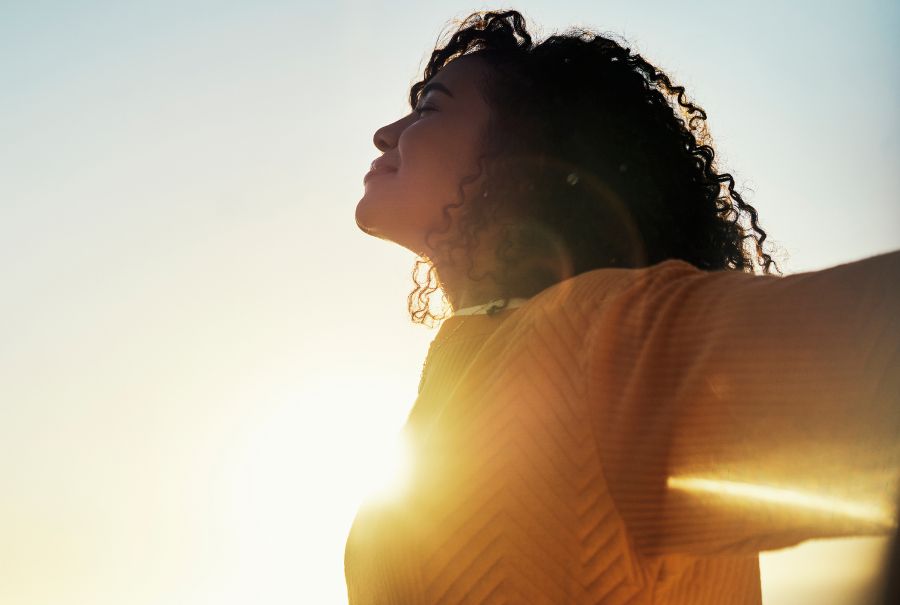
When it comes to sun safety, most people think about their skin – but we can’t forget about protecting our eyes, too.
A simple solution? Wear sunglasses. Beyond their role as a fashion staple, they’re functional too, reducing the risk of sun-related eye damage.

We spoke with Dr. Efrem Mandelcorn, UHN’s Interim Ophthalmologist-in-Chief, Director of Retinal Services and retinal surgeon at UHN’s Donald K. Johnson Eye Institute, and Dr. Alexander Kaplan, ophthalmologist in the Comprehensive Ophthalmology Unit at the Donald K. Johnson Eye Institute, about the benefits and importance of wearing sunglasses to protect your eyes.
How sunglasses protect eyes
Sunglasses should be worn year round. Even on a cloudy day, sun rays can still impact your eyes and the delicate skin around them. Wearing sunglasses helps prevent exposure to harmful ultraviolet (UV) sun rays from causing long-term ocular health problems.
Sunglasses are an important barrier for your eyes against UV rays. “Sunglasses filter UV rays and help reduce exposure to these powerful rays of light,” says Dr. Mandelcorn. “They also protect against sunburn of the skin around the eye which can result in skin cancers around the eyelid. Prevention is key!”

Benefits
Sunglasses help lower your risk of developing ocular diseases and prolonged exposure to the sun can damage your eyes. “Cumulative UV exposure over many years is associated with an increased risk of not just skin cancers on the eyelids but also cancers on the ocular surface (conjunctival melanoma) and inside the back of the eye (choroidal melanoma),” says Dr. Kaplan.
Additionally, sunglasses help eliminate glare and light sensitivity while outdoors or driving, reducing eye strain and squinting to avoid wrinkles developing around the eyes.
Choosing the perfect pair of shades
Drs. Kaplan and Mandelcorn recommend reading the label to ensure your next pair of sunglasses provides full protection. If you are purchasing a reputable brand of sunglasses, the label should indicate 100 per cent protection against UVA and UVB rays.
Here are some other aspects to consider when purchasing your next pair of shades:
- Lens colour: sunglasses with reflective or darker lenses do not necessarily mean more protection, make sure any lens colour you choose indicates 100 per cent protection against UVA and UVB rays.
- Lens size: opt for larger lenses such as oversized or wrap-around sunglasses to avoid scattered sun rays from contacting your eyes and the skin around them from all angles.
- Polarized lenses: not all polarized lenses provide maximum UV protection, so make sure you double check the pair you choose. Drs. Kaplan and Mandelcorn recommend polarized lenses are a good option for drivers and those who play sports because these lenses reduce the glare of light reflecting off surfaces such as the road, water and snow.
For kids
Parents and caregivers should encourage kids early on the importance of protecting themselves against the sun. In addition to wearing a hat and sunscreen application, getting kids of all ages to wear sunglasses for sun protection will teach them the importance of staying sun safe. When choosing sunglasses for kids, Drs. Kaplan and Mandelcorn suggest choosing sunglasses with similar UV protection to adults. You can even get the kids involved in picking their pair of shades, perhaps a pair featuring their favourite cartoon character or cool designs.
UHN’s Donald K. Johnson Eye Institute continues to gain new insights into debilitating diseases of the eye and hunt for new treatments and cures that will slow vision loss and preserve and restore sight. Learn more here.

No one ever changed the world on their own but when the bright minds at UHN work together with donors we can redefine the world of health care together.


